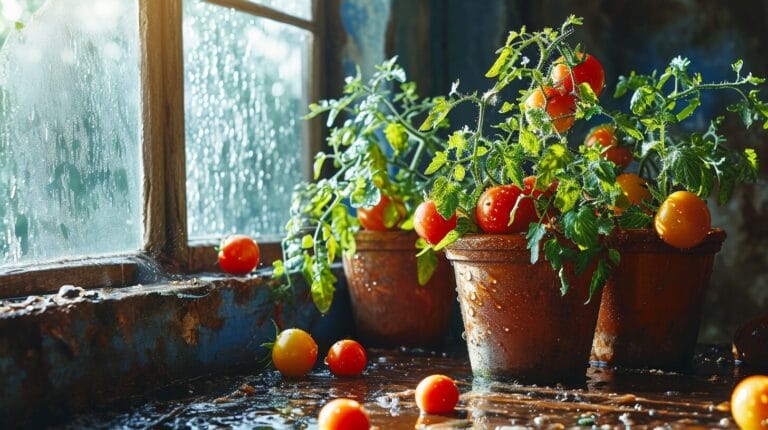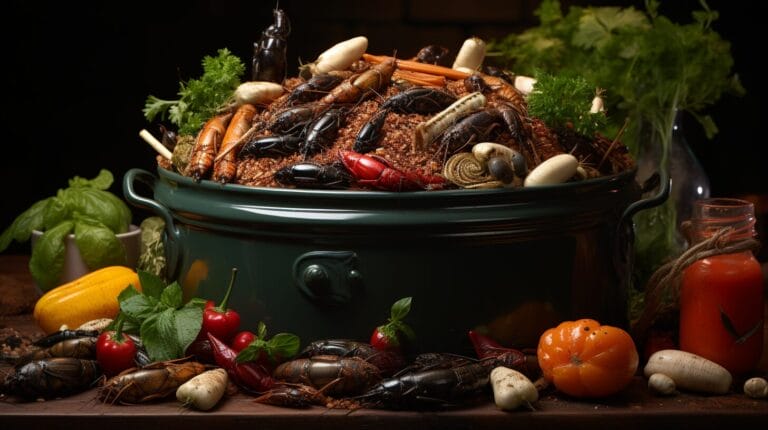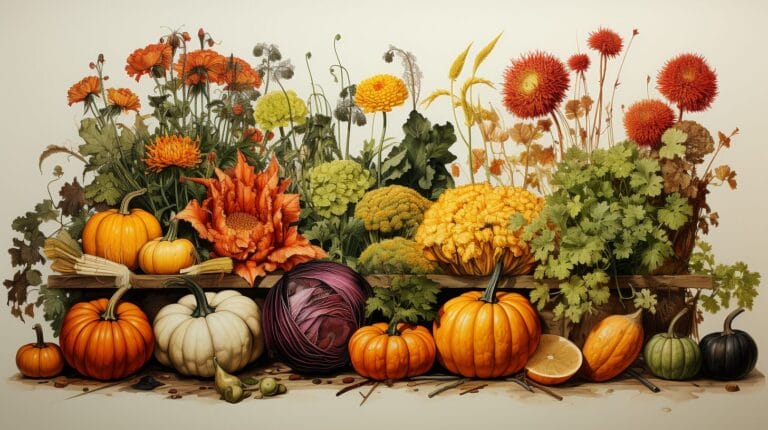Noticing yellow leaves on your beloved ZZ plant can be alarming, but understanding ZZ plant care yellow leaves is simpler than you might think. These tough indoor plants usually signal their needs through their foliage, making it crucial to spot and address the warning signs early. Whether you’re a seasoned plant parent or just starting your green journey, knowing how to restore your ZZ plant’s signature emerald-tone foliage can save your plant from declining further.
In this comprehensive guide, we’ll explore the most common causes of yellowing leaves, from improper watering habits to lighting issues, and share proven solutions to bring back that healthy green growth. You’ll discover exactly how to adjust your care routine and create the perfect growing environment for your ZZ plant. By following our expert tips, you’ll not only fix current yellowing problems but also prevent future leaf issues, ensuring your plant remains a stunning addition to your indoor garden.
Understanding ZZ Plant and Why Leaves Turn Yellow

The ZZ plant, also called the Zanzibar Gem, signals its health through its emerald foliage. When zz plant’s leaves begin to turn yellow, it often indicates an imbalance in water, sunlight, or nutrient levels. Maintaining stable conditions helps reduce yellowing and supports new growth.
What Causes ZZ Plant Leaves to Turn Yellow?
I find that overwatering is the leading cause of zz plant’s yellow leaves. Excess moisture keeps the potting mix soggy and suffocates plant’s roots. Insufficient bright, indirect sunlight leaves on a zz plant weak, while lack of essential nutrients—especially nitrogen—may also cause older leaves to turn yellow.
Common Symptoms of Yellowing Leaves in ZZ Plants
Yellowing usually starts at the base, where older leaves sit. Soft, mushy leaves indicate too much water, while crispy edges suggest dryness or nutrient deficiency. Brown spots may point to fungal or bacterial leaf spot, which thrives in damp environments.
| Symptom Location | Likely Cause | Texture |
|---|---|---|
| Lower leaves | Overwatering | Soft, mushy |
| Leaf edges | Nutrient deficiency | Crispy, brown |
| All leaves | Light imbalance | Dry, firm |
| Random spots | Root rot | Soft, brown |
How to Identify Overwatering vs. Underwatering
Overwatering leads to wet soil that rarely drains. Leaves feel spongy, and black or brown patches appear. Underwatering causes bone-dry soil, drooping foliage, and crispy yellow leaves that will not turn green again.
The Impact of Environmental Stress on Leaf Health
I notice that temperatures below 55°F, direct sunlight, or low humidity levels may stress the plant. Poor air circulation also disrupts photosynthesis and encourages disease. Keeping a regular care routine with well-draining potting mix and balanced fertilizer helps prevent zz plant are turning yellow and supports healthy leaf color.
Effective Solutions to Fix Yellowing Leaves on Zz Plants

Fixing yellow leaves on a Zz plant starts with proper watering, balanced light exposure, and timely revival methods. These measures help maintain healthy stems and ensure the leaves on a Zz plant stay vibrant.
How to Water a Zz Plant Properly
Proper watering supports healthy plant roots and prevents overwatering. Check soil dryness by inserting a finger 2–3 inches deep. Water only if it feels bone dry. Pour slowly until water flows through the pot’s drainage holes, then empty the drainage saucer right away. During spring and summer, water every 2–3 weeks. In colder months, reduce frequency by about half to prevent excess moisture.
| Season | Frequency | Amount |
|---|---|---|
| Growing (Spring/Summer) | Every 2–3 weeks | Until water drains |
| Dormant (Fall/Winter) | Every 3–4 weeks | Half the growing season amount |
Adjusting Light Conditions for Healthy Zz Plant Leaves
Zz plants are known to thrive in bright, indirect light. Position them a few feet from an east or north-facing window. Filter strong rays with a sheer curtain to avoid scorching. Rotate the pot every couple of months for even growth. If leaves develop brown spots or appear leggy, the plant may indicate it needs more light.
Techniques to Revive Yellowing Leaves and Turn Them Green
Reviving zz plant’s yellow leaves often involves removing fully discolored foliage and adjusting the care routine. Partial yellow leaves can remain if at least half the leaf is still green. If older leaves near the stem turn yellow, check for nutrient deficiencies or improper soil moisture. A fast-draining potting mix with perlite helps balance moisture and prevents root issues.
Step-by-Step Guide to Treating Yellow Leaves
- Assess the plant’s roots and soil volume for mushy spots or dryness.
- Remove completely yellow leaves using sharp scissors.
- Repot into a container with drainage holes if soil stays too wet.
- Adjust waterings, light, or fertilizer based on symptoms.
- Monitor for signs of new growth or further discoloration.
Regularly inspecting for pests like mealybug or spider mites also helps prevent further damage. This ongoing care routine keeps a Zz plant’s leaves strong and green.
Expert Insights on Zz Plant Care to Prevent Yellow Leaves
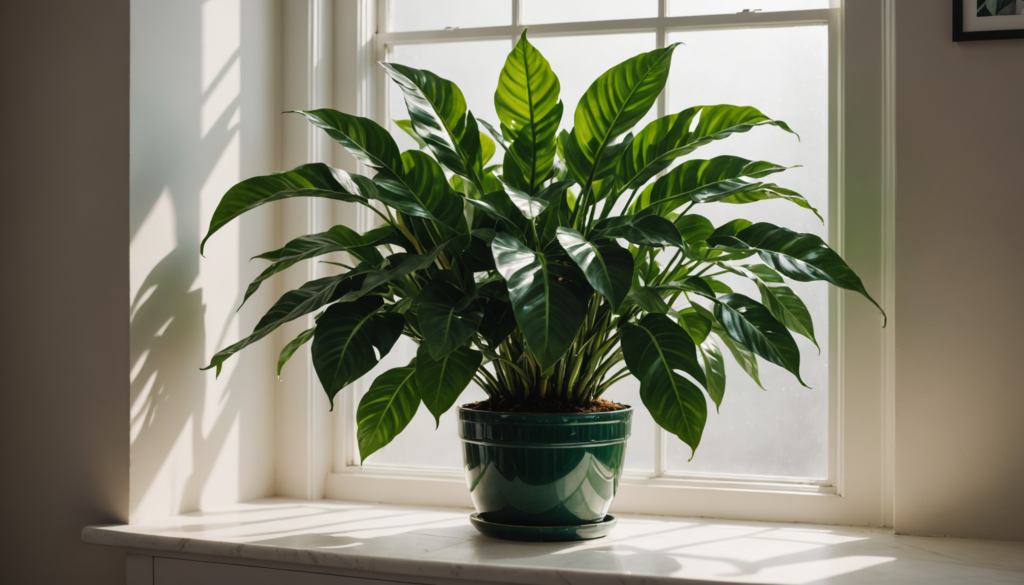
Common Myths About Zz Plant Leaf Care
Many misconceptions about ZZ plant maintenance can lead to leaf discoloration. One frequent myth claims that these drought-tolerant houseplants need weekly watering. In fact, ZZ plant roots store water so effectively that frequent watering often causes soggy soil and yellow leaves. Another popular myth suggests direct sunlight prevents yellowing, yet bright, indirect light works best to avoid leaf burn and stress (Gardening Know How).
Best Practices to Maintain Lush Green Zz Plant Growth
Proper watering and balanced growing conditions help ZZ plants maintain green stems and healthy leaves. Checking soil moisture before watering is vital. Allow the top few inches to dry, then water until excess moisture drains from the pot. A well-draining potting mix also prevents mushy stems and root problems (University of Minnesota Extension).
Light placement is another key factor. A spot with bright, indirect light encourages photosynthesis and greener foliage. Rotating the planter every few weeks ensures even growth. If harsh afternoon rays cause crispy spots or brown tips, moving the container behind a sheer curtain often helps. Fertilizer is useful but should be applied in moderation to avoid buildup or salt residue.
A quick reference table:
| Factor | Optimal Range | Warning Signs |
|---|---|---|
| Light | Bright, indirect | Pale leaves |
| Water | Every 2-3 weeks | Yellow leaves |
| Soil | Well-draining | Root rot |
| Temperature | 65-75°F | Leaf drop |
Seasonal Care Tips from Professional Growers
Seasonal adjustments help prevent excess watering and nutrient deficiencies. In spring and summer, growers recommend watering every 2-3 weeks and checking for discoloration or insect infestations. Warm, stable temperatures around 65-75°F keep the plant’s roots healthy. During cooler fall and winter months, watering decreases to every 3-4 weeks. Fertilizer is rarely needed in colder seasons since new growth slows down. Moving the planter away from chilly windows also protects the stems from damage and reduces the chance of yellow leaves.
The Role of Soil and Root Health in Zz Plant Leaf Care
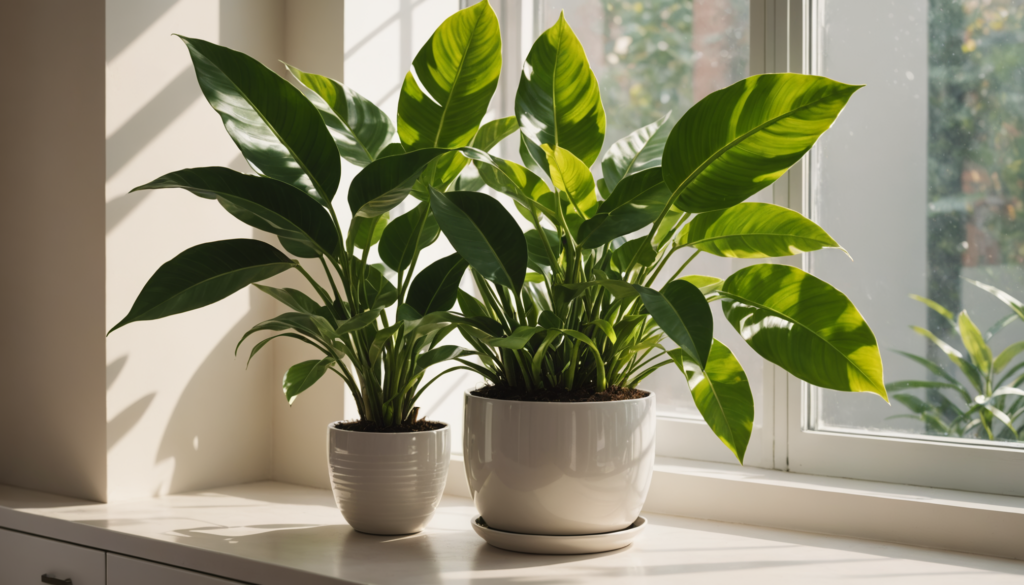
I rely on healthy soil and strong roots to keep ZZ plants looking beautiful. When these vital elements break down, I often notice the zz plant’s yellow leaves. This usually happens because plants need balanced moisture and plenty of air pockets around the plant’s roots.
Understanding Root Rot and Its Impact on Yellow Leaves
Root rot develops when wet soil suffocates essential root tissue. Early signs include mushy, yellow leaves and brown or black roots with a foul odor. This disease moves fast, destroying healthy plant tissue and making it difficult for the roots to supply nutrients. I act quickly when I see these symptoms to prevent more leaves on a ZZ plant from turning yellow.
Choosing the Right Soil for Your Zz Plant
I use a well-draining potting mix to protect against excess moisture. A balance of perlite, cactus soil, and orchid bark creates space for oxygen and keeps water from pooling:
| Component | Purpose | Ratio |
|---|---|---|
| Perlite | Improves drainage | 30% |
| Cactus soil | Provides structure | 40% |
| Orchid bark | Creates air pockets | 30% |
I often add extra perlite if the soil feels too compact.
How to Encourage Healthy Roots for Thriving Green Leaves
I allow the top two or three inches of soil to become dry before watering again. Containers with multiple drainage holes work best, and I check that roots have space to expand. Steady temperatures around 65-75°F also help prevent disease on houseplants and encourage new growth.
Signs of Root Problems and Treatment Options
Common warning signs include yellowing older leaves, stunted growth, and soil that remains soggy for several days. I remove the plant from its pot, trim decaying roots, and repot in fresh soil until water runs easily from the drainage holes. Then I adjust waterings and inspect for healthy leaf development.
Monitoring and Maintaining Zz Plant Health
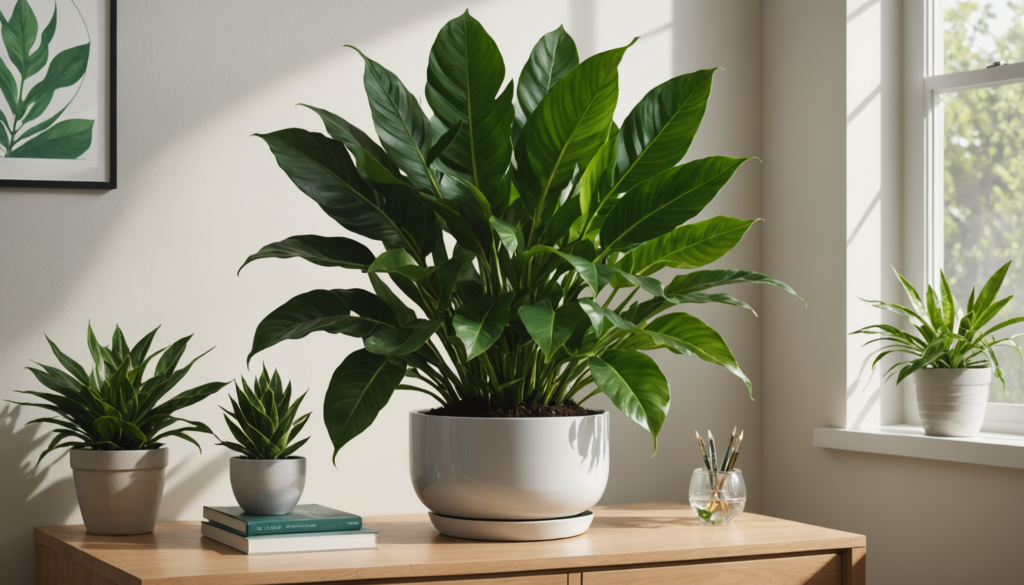
Consistent monitoring of this houseplant reduces the risk of yellowing and keeps leaves on a zz plant lush. Regular checks help detect dryness, pest damage, or nutrient deficiencies before they spread.
Essential Tools for Zz Plant Care
A few simple tools support proper care and help prevent zz plant’s yellow leaves. They make it easier to measure moisture, ensure good airflow, and control light exposure.
• Moisture meter for checking soil dampness
• Well-draining pot with drainage holes to avoid excess water
• Pruning shears for removing older leaves or brown spots
• Humidity gauge to track indoor conditions
• Light meter to measure bright, indirect sunlight
| Tool | Purpose | Frequency |
|---|---|---|
| Moisture meter | Prevents overwatering | Weekly |
| Light meter | Monitors brightness | Monthly |
| Pruning shears | Removes damaged leaves | As needed |
| Humidity gauge | Tracks moisture levels | Daily |
| pH meter | Checks soil health | Monthly |
Creating an Optimal Growing Environment
All zz plants are known to thrive in steady temperatures of 65–75°F (18–24°C). Lower ranges may indicate cold stress or lead to yellow leaves. Bright, indirect light is best, and a sheer curtain helps filter harsh rays. Ideal humidity is around 40–50%, which discourages fungal growth and keeps zz plant’s leaves free of brown edges.
Weekly and Monthly Maintenance Schedule
A balanced care routine keeps the plant’s roots healthy and prevents issues like zz plant are turning yellow or discoloration. Short, regular steps maintain lush foliage and stable growth.
• Weekly: Check moisture levels, remove damaged leaves, inspect for pests, and dust surfaces.
• Monthly: Evaluate light conditions, verify pH, assess fertilizer needs, and consider a repot if roots seem cramped. Rotate the planter to receive even amounts of sunlight.
Future Trends in Zz Plant Care and Plant Health Research
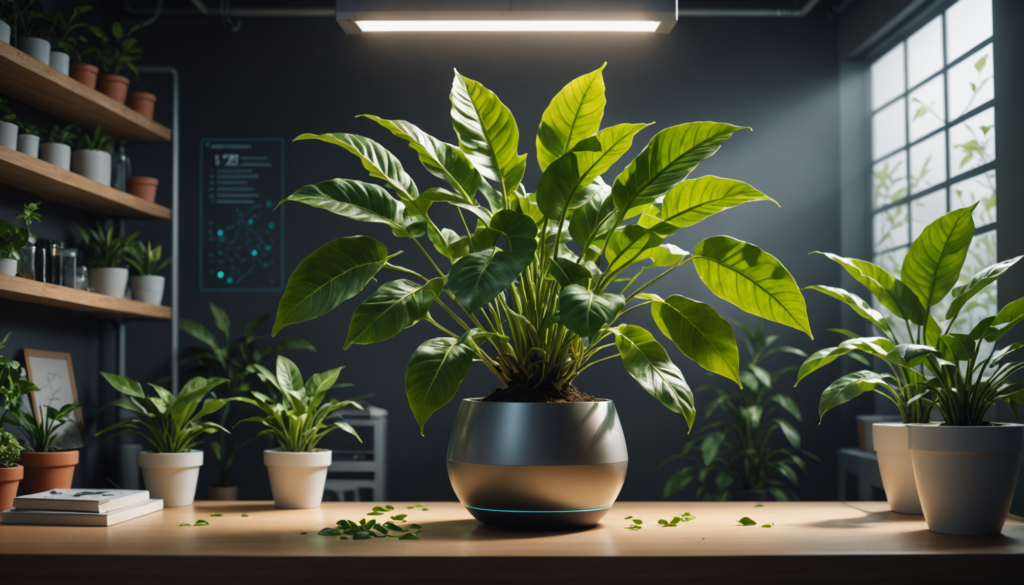
Evolving Techniques in Indoor Plant Care
I rely on smart plant monitoring systems to track moisture levels in my ZZ plant’s pot. Soil sensors help me avoid overwatering, which often leads to yellow leaves on a ZZ plant. Specialized LED grow lights ensure these houseplants receive bright, indirect light without stressing their stems.
Mobile apps remind me to water every 2-3 weeks, depending on the dryness of the potting mix. This schedule prevents brown spots and nutrient deficiencies. I also choose a well-draining potting mix to balance moisture retention and proper drainage.
Key developments in ZZ plant care include:
• Self-watering planters with moisture indicators
• Automated light monitoring systems
• Smart soil pH testing devices
• Houseplant health tracking platforms
Current Research on Zz Plants and Leaf Health
I observe ongoing studies that explore ZZ plants’ drought tolerance. These findings help me refine care routines and avoid situations where leaves may turn yellow from excess moisture or poor soil conditions. Researchers also examine how ZZ plants filter air pollutants, reinforcing the link between healthy plant roots and better indoor air quality.
Some studies highlight the need for balanced houseplant fertilizer to prevent leaf discoloration. I pay attention to nitrogen, potassium, and magnesium levels to keep older leaves from dropping. Consistent monitoring of light and water also supports strong growth.
Innovative Solutions for Plant Health Management
I rely on custom soil blends that reduce nutrient deficiencies and keep stems from turning mushy. These formulations help balance water retention and drainage, protecting the plant’s roots against rot. I also use non-invasive sensors to detect early signs of stress before leaves yellow or develop crispy spots.
A comparison of emerging ZZ plant care tools:
| Innovation | Benefit | Impact on Yellow Leaves |
|---|---|---|
| Smart Sensors | Prevents overwatering | Reduces root rot risk |
| LED Grow Lights | Optimizes light exposure | Prevents light stress |
| Custom Soil Blends | Improves nutrient delivery | Prevents deficiencies |
| Mobile Apps | Tracks care schedule | Ensures consistent maintenance |
I see plant health monitoring progress with tools that catch stress indicators before leaves turn yellow. This early detection helps me correct issues like pest damage or bacterial leaf spot more effectively (University of Florida IFAS Extension, Iowa State University Extension).
Troubleshooting Common Zz Plant Problems
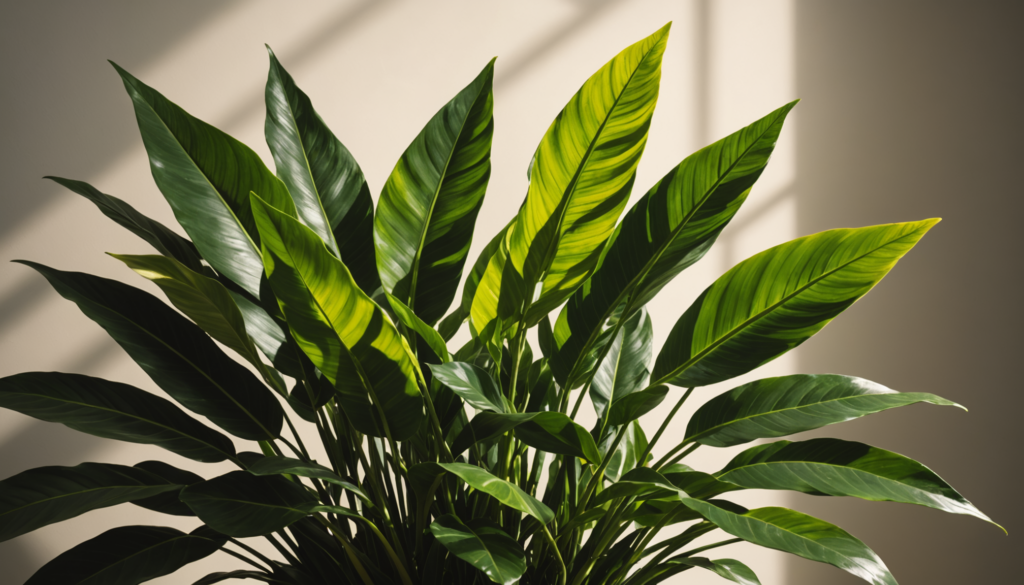
I watch for clear signs of trouble in ZZ plants to diagnose potential issues. If ZZ Plant Care Yellow Leaves appear, it may indicate overwatering or a drainage problem. Thorough observation ensures a swift response to keep the plant’s roots healthy and correct problems early.
Quick Assessment Guide for Plant Health
I begin by checking the top two inches of soil for moisture. When older leaves on a ZZ plant begin turning yellow from the bottom, this often suggests soggy soil, while bright new leaves showing pale spots may point to nutrient deficiencies. Soft or mushy stems can signal rot or pest damage, and brown blotches may indicate disease. I also examine the overall stance of this houseplant and look for black stem areas that require immediate attention (Missouri Botanical Garden).
When to Repot vs. Treat in Place
I repot if roots poke through drainage holes or if the pot stays wet for long periods. Severe root binding or clear signs of root rot also signal the need for fresh potting mix. However, I treat in place if only a few older leaves have turned yellow and there is no mushy stem or foul smell. Occasional leaf discoloration may occur from environmental changes, such as insufficient light or temperature shifts.
Emergency Care for Severely Yellowed Plants
I remove yellow foliage at the base, then trim any soft spots on the stems. If rotted roots smell foul, I cut them away and place the entire root system in well-draining soil. I reduce watering frequency, ensure bright but indirect light, and maintain average humidity. This approach stabilizes the plant and supports healthy new growth over the next couple of weeks.
Conclusion
Taking care of a ZZ plant with yellow leaves doesn’t have to be complicated. By maintaining proper watering habits and providing the right amount of indirect light, you can help your plant recover its vibrant green color. Understanding the signs of overwatering and root health is key to preventing future yellowing issues.
Remember that ZZ plants are naturally hardy and forgiving houseplants. With consistent care, including well-draining soil and a regular maintenance schedule, you can keep your ZZ plant healthy and thriving. Whether you’re dealing with yellow leaves now or want to prevent them in the future, these simple care practices will help your ZZ plant flourish and remain a beautiful addition to your indoor garden for years to come.
FAQs
1. Why are the leaves on my ZZ plant turning yellow?
The most common reason for yellowing leaves on a ZZ plant is overwatering. Other potential causes include direct sunlight, which can cause leaf discoloration, and insufficient nutrients, which may result in uniform yellowing.
2. Can yellow leaves on a ZZ plant turn green again?
Leaves that have turned fully yellow rarely revert to green. If the leaf shows only slight discoloration, early intervention might help, but generally, older yellow leaves will eventually drop once the underlying issue is resolved.
3. How do I address yellowing caused by light issues?
If yellowing occurs on sun-exposed leaves, it’s likely due to direct sunlight. Use a sheer curtain to filter the light or move the plant further away from direct sunlight.
4. What are the signs of nutrient deficiency in a ZZ plant, and how do I fix it?
Nutrient deficiency often presents as uniform discoloration across the plant. Apply a balanced houseplant fertilizer quarterly to address this issue.
5. How do I identify and treat root rot in a ZZ plant?
Root rot is indicated by brown roots and yellow leaves. To treat it, cut away the rotted portions of the roots and repot the plant in fresh potting mix.


